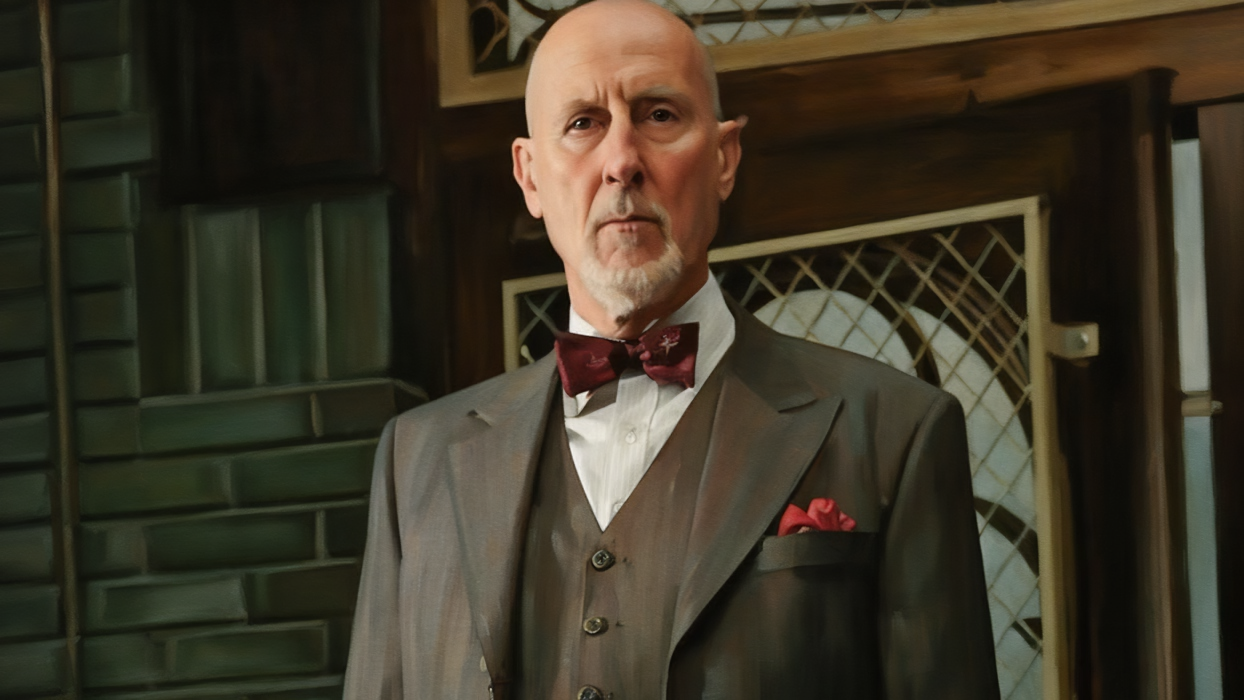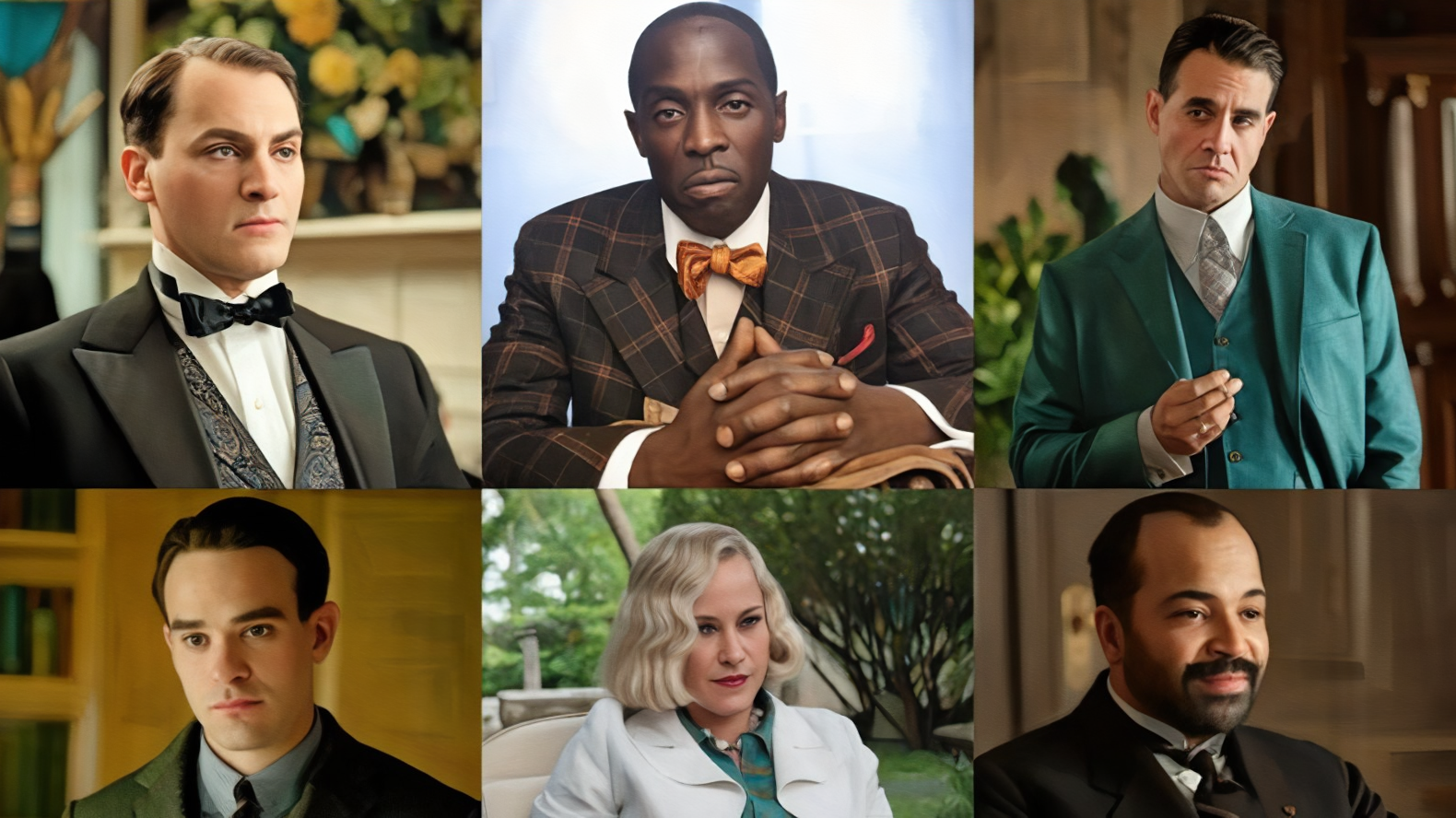Dr. Arthur Arden is one of the most chilling characters to ever grace the American Horror Story universe. Introduced in Asylum, the second season of the anthology series, Arden is the twisted physician of Briarcliff Manor—equal parts mad scientist, Nazi war criminal, and brutal sadist. Behind his cold, clinical demeanor lies a mind obsessed with purity, power, and control, making him one of the most morally repugnant—and fascinating—figures in horror television. Every moment with Arden is a psychological tightrope walk, teetering between intellect and insanity. These are the Top 10 most unforgettable moments from Dr. Arthur Arden, where his terrifying genius and grotesque obsessions collided to leave an indelible mark on viewers and characters alike.
#10: Terrorizing Sister Mary Eunice with Sexual Shame and Control
Dr. Arden’s twisted relationship with Sister Mary Eunice is a masterclass in psychological abuse. Before her possession by the Devil, Mary Eunice is innocent and kind-hearted—traits Arden despises and desires in equal measure. He constantly shames her for her purity while simultaneously fetishizing it, blurring the line between his obsession and his contempt. In one unforgettable moment, he berates her for catching his interest, accusing her of “tempting” him with her goodness. His need to dominate her—intellectually, sexually, and spiritually—is grotesque. The dynamic becomes even more disturbing after her possession, when Mary Eunice begins turning the tables, weaponizing her newfound demonic power to manipulate Arden’s desires. But in this early moment, it’s Arden who holds all the psychological power. The scene highlights his core pathology: he doesn’t just crave power—he needs to corrupt it. And watching him do so with surgical precision is as sickening as it is unforgettable.
#9: Implanting Tracking Devices in His Victims
One of Arden’s most sinister practices is his belief in alien experimentation—a belief so warped he begins implanting crude tracking devices into the bodies of his patients. He operates under the delusion (or calculated manipulation) that extraterrestrials are involved with Briarcliff’s more bizarre phenomena. When Kit Walker arrives—wrongfully accused of being the serial killer “Bloody Face”—Arden subjects him to a series of dehumanizing tests, including forced surgery. What he extracts from Kit’s neck isn’t flesh or infection—it’s a blinking, mechanical device, which Arden stares at with obsessive awe. This moment is unforgettable not only for its body horror, but for what it reveals about Arden’s fractured mind. Is he a visionary genius confronting the unknown? Or a delusional butcher grasping for significance in the midst of his monstrous acts? The ambiguity adds to the terror. He isn’t just violating his patients—he’s doing it under the guise of discovery. And in his world, the ends always justify the most horrific means.
#8: The Reveal of His Nazi Past as Hans Grüper
Perhaps the most defining—and damning—reveal of Arden’s character is the truth about his identity: he is not just a twisted doctor, but a former Nazi war criminal named Hans Grüper. Sister Jude uncovers his past, connecting the dots between his barbaric experiments at Briarcliff and the horrors he inflicted during World War II. The reveal recontextualizes everything Arden does, casting his obsession with purity, control, and mutilation in an even more monstrous light. He didn’t become evil—he was evil all along, hiding in plain sight. What makes this moment unforgettable is the sudden clarity it provides: Arden’s experiments aren’t just acts of madness—they are continuations of an ideology rooted in genocide. His transformation from cold doctor to exposed Nazi adds historical horror to the narrative, grounding his villainy in real-world atrocities. And perhaps most chilling of all? Even after the reveal, Arden expresses no remorse. Only wounded pride.
#7: Creating the Raspers
In one of the show’s most disturbing subplots, Arden performs gruesome experiments on Briarcliff’s most vulnerable patients, turning them into hideous, feral creatures known as the Raspers. These mutilated beings are discarded test subjects, surgically altered and chemically enhanced under the guise of making the human body immune to disease, radiation, and death. The very sight of them—emaciated, scarred, screaming—is nightmare fuel. What makes their existence even more horrific is the context: Arden justifies his actions by claiming he’s preparing humanity for the harsh conditions of a post-nuclear future. But really, it’s about power, about playing God. The creation of the Raspers is the most grotesque manifestation of Arden’s hubris and cruelty. He doesn’t just break bodies—he erases identities. These people had names. Arden turned them into monsters, then discarded them like garbage in the woods. It’s a moment that cements his place in the pantheon of horror villains: not because he’s unhinged, but because he knows exactly what he’s doing—and does it anyway.
#6: Forcing Patients into Unwarranted Sterilizations
Among Dr. Arden’s most heinous acts is his role in forcibly sterilizing female patients under the guise of “treatment.” One of the most disturbing examples involves Shelley, a vivacious nymphomaniac character who is punished not for illness, but for her sexual freedom. Arden, obsessed with control and moral “purity,” uses his position to abuse her trust and subject her to a hysterectomy without her consent. The horror of this moment lies not only in the violation itself but in the cold detachment with which Arden justifies it. He treats the procedure as routine—necessary even—showing no recognition of the pain or dignity he’s stripped away. Shelley’s defiance is what draws Arden’s ire, and rather than treat her, he mutilates her, both physically and symbolically. The act echoes real-world atrocities committed in the name of eugenics, lending the scene a chilling historical resonance. Arden doesn’t see patients—he sees problems to be “fixed.” And in doing so, he becomes less a healer and more a butcher in a lab coat, hiding behind science to justify cruelty.
#5: Shelley’s Horrifying Transformation
What begins as an act of punishment quickly devolves into one of American Horror Story’s most grotesque tragedies. After performing unauthorized sterilization on Shelley, Arden continues to experiment on her, injecting her with chemicals and surgically disfiguring her until she is unrecognizable—limbless, voiceless, and entirely dependent. He dumps her in the woods to live among the Raspers, thinking her lost forever. But she survives, discovered by schoolchildren in a scene as heartbreaking as it is horrifying. Shelley, once vibrant and defiant, is reduced to a crawling husk of her former self—groaning, begging for death. This moment is unforgettable not just for its visceral horror, but for what it says about Arden. He doesn’t just destroy people physically—he obliterates their essence. Shelley was meant to be an example, a warning to others not to challenge him. And in that twisted purpose, Arden succeeds. His actions haunt the season, and Shelley’s suffering becomes a symbol of the cost of unchecked power. Her fate is not just a moment of shock—it’s the soul of Asylum’s darkest themes.
#4: Confronting the Possessed Sister Mary Eunice
As Sister Mary Eunice becomes increasingly overtaken by demonic possession, Arden’s obsession with her purity turns to fear, then awe. In one unforgettable confrontation, Arden realizes that the woman he once sought to dominate is no longer within reach—she’s become something more powerful, more terrifying. And instead of recoiling, he embraces it. Arden, a man who once scorned faith and viewed the world through cold logic, begins to see Mary Eunice as a divine instrument. His obsession evolves into a twisted reverence. This pivot marks a significant shift in Arden’s psychology—he no longer wishes to control her, but to worship her darkness. It’s manipulative, sacrilegious, and deeply disturbing. He starts acting as her protector, even executioner, under her command. For a man who prided himself on clinical rationality, Arden’s descent into spiritual submission reveals a hidden desperation: when science fails him, he turns to power in whatever form he can find it—even if it’s demonic. This scene is unforgettable because it’s the moment Arden stops pretending to be in control and starts willingly serving evil.
#3: Burning the Bodies of His Victims
In a sequence that encapsulates the full weight of Arden’s crimes, he is shown casually incinerating the bodies of his failed experiments in the basement crematorium of Briarcliff. To Arden, this isn’t murder—it’s waste management. The casual, methodical way he disposes of the dead is what makes this moment so deeply unsettling. He doesn’t whisper apologies. He doesn’t offer prayers. He pushes the stretcher in, pulls the lever, and walks away. It’s routine. Inhuman. Viewers are left to contemplate the enormity of the lives lost people who entered Briarcliff seeking help or healing, only to be reduced to ash at the hands of a man playing God. The scene offers no jump scares, no blood spray—just the cold reality of genocide on a smaller, hidden scale. In this moment, Arden ceases to be a man with twisted intentions and becomes a full-blown monster. The crematorium isn’t just a place of disposal. It’s a symbol of the moral void at the heart of his character.
#2: Shooting the Angel of Death to Save Sister Mary Eunice
In a shocking moment that fuses obsession, horror, and tragedy, Arden confronts the Angel of Death—Shachath—as she comes to claim the soul of Sister Mary Eunice. But rather than let her go, Arden draws a gun and shoots the celestial being, attempting to halt death itself. It’s a desperate, irrational act that reveals the depth of his twisted devotion. He no longer sees Mary Eunice as a human or even a victim—she is his salvation, his creation, his last chance at redemption or dominance. The moment is unforgettable because it collapses the walls Arden had built around himself. The clinical detachment, the moral superiority—it all disintegrates in the face of losing control over the one thing he truly “loved.” The shot doesn’t work, of course, and it’s a turning point for Arden. His descent into madness is no longer theoretical. He has broken from reality, and in trying to stop death, he seals his own fate.
#1: Cremating Himself with Sister Mary Eunice’s Body
Dr. Arden’s final act is one of the most shocking and symbolically loaded moments in the AHS franchise. After Sister Mary Eunice is freed from demonic possession and dies, Arden, unable to cope with her loss and the collapse of everything he thought he controlled, chooses to end his own life. But he doesn’t simply overdose or disappear—he cremates himself beside her body in the hospital’s incinerator. It’s a horrifying and poetic conclusion. In death, Arden fuses himself to the one woman he both loved and destroyed. The image of his body engulfed in flame alongside hers is seared into the minds of viewers. It’s both a confession and a punishment. Arden, who spent his life burning others without remorse, now joins them in the same fire. It’s unforgettable not only for its visual impact, but for what it represents: the total collapse of a man whose legacy is built on suffering, now consumed by it. No moment better captures the horror of Arden’s arc—and the hell he created for everyone, including himself.
Dr. Arthur Arden isn’t just a villain—he’s a reflection of the worst impulses of unchecked power, pseudoscience, and psychological abuse. Each moment on this list reveals a different facet of his terrifying character: the sadist, the manipulator, the ideologue, and ultimately, the coward. His legacy within American Horror Story is unforgettable because it’s grounded in very real fears—of institutions, authority, and those who abuse both. Arden didn’t need supernatural powers to horrify us. He just needed a scalpel, a lie, and the belief that no one could stop him. And for much of Asylum, no one could.





